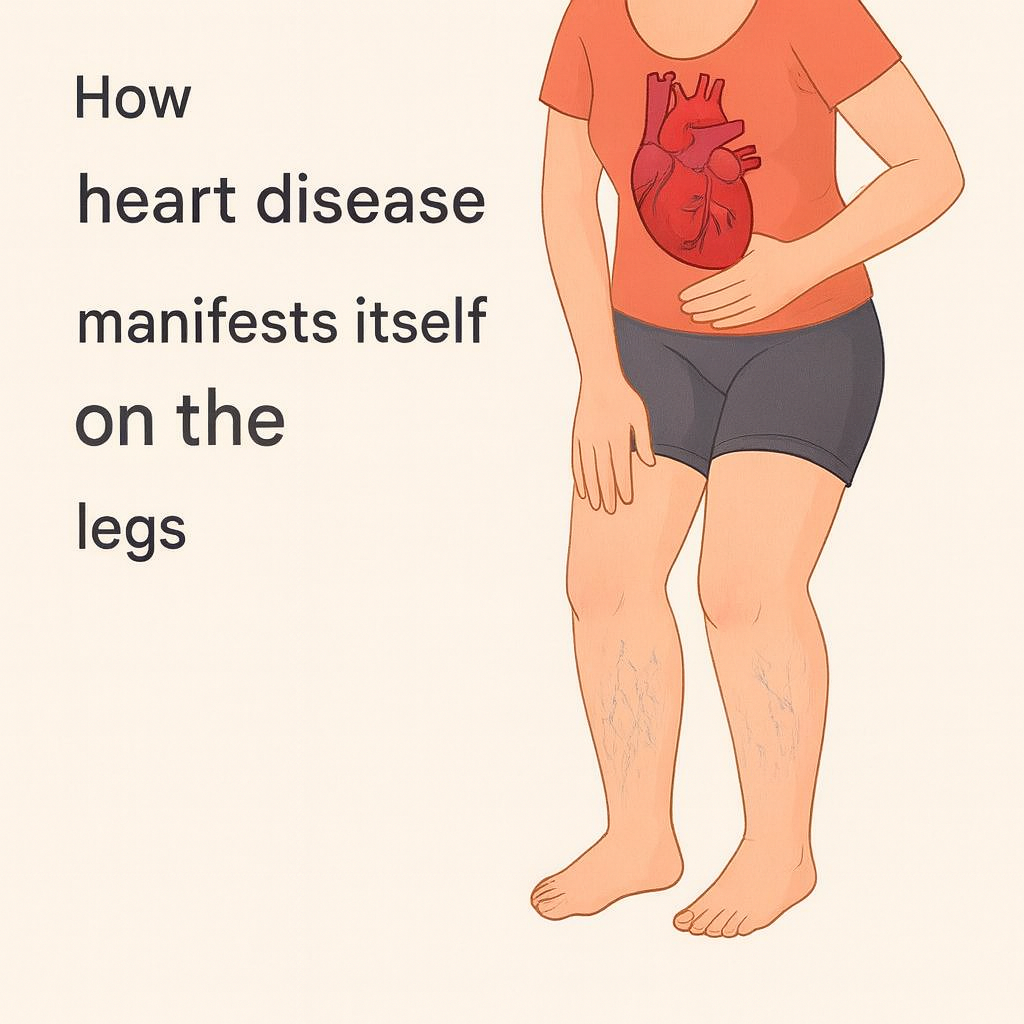5 Warning Signs on Your Legs That May Signal Heart Problems
1. Swelling (Ankles, Feet, or Lower Legs)
What it looks like:
Your shoes feel tight, your socks leave deep marks, or pressing on your leg leaves a noticeable dent (pitting edema).
Heart connection:
When the heart can’t pump efficiently, blood backs up in the veins of the legs, increasing pressure. This forces fluid into the tissues, causing swelling — a classic sign of congestive heart failure.
2. Varicose Veins or Enlarged Veins
What they look like:
Bulging, twisted veins or more prominent blue/purple veins on the lower legs.
Heart connection:
Poor circulation from weakened heart function increases venous pressure, making veins stretch and valves weaken. This leads to pooling, pain, and visible vein changes.
3. Changes in Skin Color or Temperature
What it looks like:
Pale, bluish, or reddish skin on the toes or feet. Sometimes the legs feel colder than the rest of the body.
Heart connection:
Reduced oxygen-rich blood flow makes the skin appear discolored. Coldness often indicates that the heart isn’t pumping enough warm, oxygenated blood to the extremities.
4. Leg Pain, Cramping, or Fatigue When Walking
What it looks like:
A heavy, aching, or cramping sensation (especially in the calves) that eases with rest.
Heart connection:
This can indicate poor blood flow due to narrowed arteries or weakened cardiac output — commonly associated with coronary artery disease or peripheral artery disease.
5. Slow Healing, Ulcers, or Persistent Dryness
What it looks like:
Sores that don’t heal, thin shiny skin, or persistent dryness and cracking.
Heart connection:
Insufficient circulation deprives tissues of oxygen and nutrients needed for repair. Chronic poor blood flow can even lead to ulcers on the feet or ankles.
⚠️ Important:
These signs do not confirm heart disease on their own. They can also be caused by kidney problems, diabetes, venous insufficiency, infections, or injuries. However, if several of these symptoms develop together or worsen over time, a heart evaluation is strongly recommended.
What You Should Do
Do not ignore long-lasting swelling, discoloration, cold feet, or leg pain. If these symptoms occur along with chest heaviness, shortness of breath, fatigue, dizziness, or rapid heartbeat, seek medical attention promptly.
Prepare for Your Appointment
Take note of:
When symptoms first appeared
What makes them better or worse
Any additional symptoms (fatigue, palpitations, shortness of breath)
Your doctor may order:
A physical exam
An ECG
Echocardiogram
Blood tests (BNP, troponin, cholesterol, electrolytes)
Ultrasound or Doppler of the leg veins
Stress testing
The Takeaway
Your legs aren’t just the foundation of your body — they are also a reflection of your heart’s performance.
Swelling, pain, color changes, or coldness can be early warning signs that your heart is under strain.
Early recognition and proper evaluation can greatly improve diagnosis, treatment, and quality of life.
Disclaimer
This article is for educational purposes only and does not replace professional medical advice. Always consult your healthcare provider if you experience concerning symptoms or before starting new health routines.

